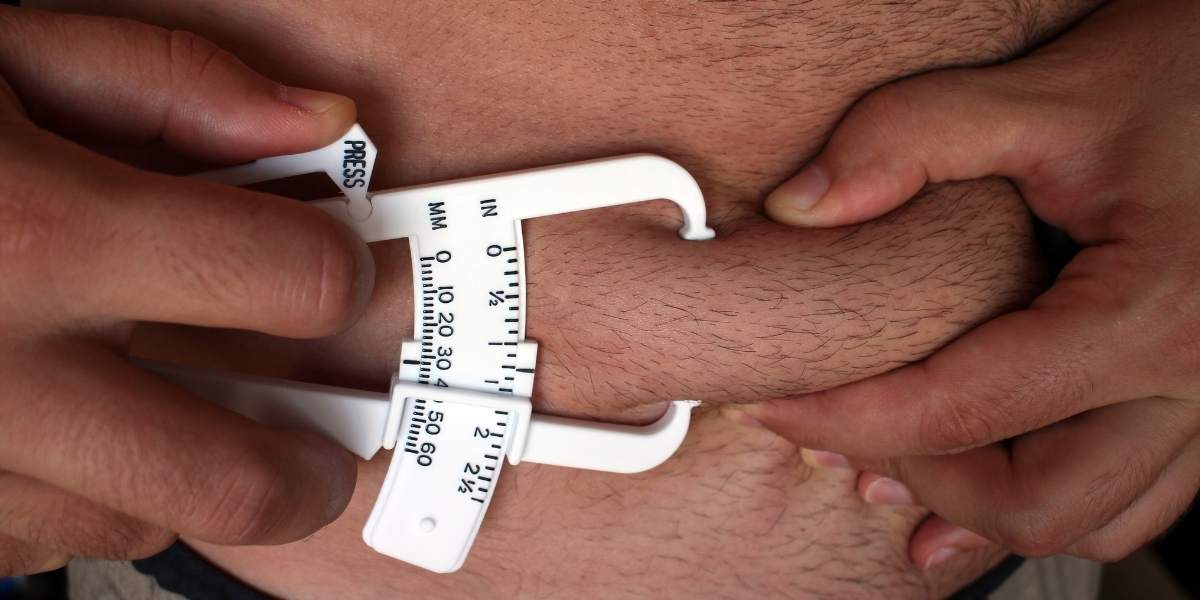Nowadays, obesity is the major cause of diseases like heart issues, high cholesterol levels, type 2 diabetes, etc. our diet and eating habits have been causing this problem for a very long time, and we need to take measures to solve this problem. What is BMI in fitness? What does body mass index measure? Body mass index unit is a measure of body fat level and gives us a warning in case of higher body fat levels.
Health professionals use this for patients to determine their condition. In case of high BMI, physicians advise the patients to increase physical activities and take an adequate diet that is less fat. If the BMI is low, you should take the proper diet to fulfill your body requirements.
BMI In Fitness
BMI fitness is essential in determining the body’s physical condition. BMI uses the weight and height and gives the BMI value. It varies from gender to gender, as the fat level of boys and girls differs with age. For people who have a muscular body, BMI may be inaccurate as it falls in the category of obese people, but they will be healthy. A BMI value between 18.5 and 24.9 is considered healthy. Below that, you will be underweight, and above that, you will be overweight. To lower your fat level, you should increase your physical activities.
What Is BMI?
The body mass index (BMI) is a technique to estimate how healthy we are by using our weight and height. It tells about the fat mass index. High fat means that we are unhealthy.
- It tells us about our health and whether our body fat falls in the category of healthy people.
- If our BMI is below 18.5, then we are underweight.
- Our BMI is between 18.5 and 24.9, indicating that we are healthy.
- If our BMI is between 25 and 29.9, it shows that we are in the overweight category.
- If our BMI is between 30 and 39.9, we are obese.
How To Understand The BMI Value
BMI calculation divides our weight in kilograms and our height in meters squared. So a BMI of 30 will means 30 kg/m2.
Accuracy Of BMI
It does not apply to every person. You need to consider some factors when calculating your BMI. Also varies from location to location and body to body.
- If your body is muscular and your BMI falls in the category of obese people, it does not mean you are unhealthy.
- Adults of South Asia origin usually have high health risks even though their BMI falls in the healthy category.
How Is BMI Measured
Do you want to know how is bmi calculated? You can calculate your weight in three steps with the BMI calculator
- First, convert your weight into pounds.
- Then convert your height into inches.
- Divide your weight by inches and multiply your answer by 10.
Bmi Calculator
| require | require |
Your BMI is......
| BMI | Classification |
|---|---|
| less than 18.5: | Underweight |
| 18.5 - 24.9: | Normal weight |
| 25 - 29.9: | Overweight |
| 30 - 34.9: | Class I Obese |
| 35 - 39.9: | Class II Obese |
| 40 upwards: | Class III Obese |
BMI Units Of Measure Of Weight 76 Kg, Height 67.2 Inches
- Covert this into pounds which is 167.551 pounds.
- 167.551 / 67.2= 2.4933318
- 2.4933318 multiply it by 10
- 24.93 is your BMI value
Body Mass Index According To Age, Weight, Child, And Adults
Body mass index is measured with the same formula, but for children and teens, you should consider age and gender as body fat changes from gender to gender.
BMI Table For Weight
The formula for BMI is BMI = kg/m^2 can be simply calculated by a person’s body weight and height given in meters and taking squares.
| Body Mass Measurement Index (BMI) | Weight Status |
| Below 18.5 | Underweight |
| 18.5 – 24.9 | Healthy |
| 25.0 – 29.9 | Overweight |
| 30.0 plus | Obese |
The body fat percentage below which a woman is considered to be underweight, is 18.5.
The body fat percentage below which a man is considered to be underweight is 18.5.
BMI According To Age
BMI calculator by age is as follows
| Age | Height(m) | Weight(kg) | BMI(kg/m^2) |
| 42 | 1.68 | 60.3 | 21.3 |
| 42.8 | 1.63 | 61.6 | 23.2 |
| 40 | 1.59 | 58.8 | 22.1 |
BMI For Child
The BMI is calculated with the BMI calculator child. It differs from the adults. Healthy children have BMI values between the 5th percentile and 85th percentile.
BMI For Adults
BMI for a male is calculated by BMI male calculator
| Male | Height(meters) | weight (kg) | BMI(kg/m^2) |
| 1 | 1.52 | 59 | 19.568 |
| 2 | 1.68 | 60.3 | 21.3 |
BMI Female Calculator
| Female | Height (meters) | Weight (kg) | BMI(kg/m^2) |
| 1 | 1.59 | 58.8 22.1 | 22.1 |
| 2 | 1.63 | 61.6 | 23.2 |
What Is BMI Used For
BMI is an essential factor in determining the condition of an individual. With the help of BMI, we can evaluate the person’s fat level. If the fat level is not average, we can identify the person with some disease.
If the person’s fat level is high, this person may have conditions like heart issues and high cholesterol levels, diabetes. Medical health professionals usually use BMI, and with the help of this, they can take preventive measures to avoid diseases.
And if the BMI is low, it shows that you are underweight, and you must take an adequate diet according to your requirement. But it is sometimes genetic that their metabolism rate is high, and they are normal even though their BMI is below average.
Importance Of BMI
Body mass index(BMI) tells us about our body fat, and it gives an early alarm so that we can take measures to overcome the problems whether our BMI is low or high. If you have a high BMI, you may face obesity-related issues. With low BMI, you may encounter problems like malnutrition, osteoporosis, and anemia.
Medical health professionals use this as a standard to perform some surgeries. For instance, to be eligible for weight loss or bariatric surgery, the person should have a BMI value in the category of obese people. As physical strength is associated with muscle strength and mobility, BMI is important for athletes. The higher the BMI value indicates that the person has higher fat, which will affect the performance of athletes.
BMI And Health
A person with a healthy weight is more active and has fewer chances of getting diseases. Most diseases are related to body weight, whether low or high. BMI gives an estimation of body fat. If your body fat deviates from the standard value, you will face some problems.
In case of a higher BMI value above 25, a person will fall in the category of obese people. Obesity is the cause of many problems like high blood pressure, cardiovascular diseases, and lung problems, and obesity can be a cause of depression. Obesity is the primary cause of type 2 diabetes as it increases the sugar level in the body, and the body’s metabolism rate is affected by this.
If the BMI value is below 18, the person will be considered underweight. Having a low weight is also a cause of diseases. For example, malnutrition, osteoporosis, and anemia are diseases related to the body’s weight.
The Benefits Of BMI
For the rough estimation of body weight, BMI is used worldwide. BMI reveals the person’s body fat. With this help, you can get a general analysis of the obesity rate of the people. It is helpful for researchers as they can understand the cause of obesity in society by studying factors like Diet, demographic areas, and gender. After checking the data, scientists take precautionary measures to overcome the problem of obesity, which causes many diseases. Moreover, gym trainers or physicians also use the BMI to estimate a person’s body weight and prepare a dietary plan.
Bias And Limitations Of BMI
BMI is not considered the standard source to measure body fat due to some limitations as it neglects the following elements;
- Muscle mass
- Bone density
- Age
- Sex
- Body composition,
- Stages of development
Muscle Mass
BMI is based on two elements, weight, and height. BMI will consider the weight of muscles in the value, and a person who has a higher muscular weight will be shown in the category of overweight people despite the fact he is healthy.
Some people have increased bone density. The density of bones varies from person to person. Some people have large bones, high in density as compared to others. So they will have high BMI values but will be healthy as they have denser bones and less fat.
Age
As a person grows older, many changes occur in the body. But the body weight may remain constant. Due to aging, muscle mass decreases, and visceral fat increases, which is more dangerous than regular fat. BMI does not consider this; that’s why BMI is not acceptable as a standard for body fitness.
Sex
The body composition of males and females changes over time. Women are more likely to have more body fat than men at the same BMI value. As women grow older, they will accumulate subcutaneous and visceral fat layers. BMI does not consider this physiological difference, which is not suitable for all categories.
Body Composition
BMI only tells about body fat. But the location of fat is more important. Scientific studies show that the fat around the waist or abdominal organs is more dangerous and will cause more diseases that can even be fatal. As fat causes hindrance in the functions of abdominal organs, resulting in conditions like heart attack and high blood pressure.
Stages Of Development
BMI does not consider the stages of development like women during pregnancy and children in the growing phase. The fat composition will differ in these stages, and the BMI value is inaccurate for this value.
Body Fat Vs BMI
Body Fat
Average body fat is the essential fat to maintain body functions, like maintaining shape, reproductive functions, and food storage for later use. If the person has higher body fat than average, he will face problems like high blood pressure, heart issues, etc. The average value of healthy fat levels differs from gender to gender. It is 8-19 % for men, while for women it is 22-33%.
BMI
Body mass index is the bmi measurements of fat by using the weight and height of the person. A person in-between values of 18.5 and 24.9 is healthy; below that will be underweight, and above that, they will be overweight.
Other BMI Measurement Methods For Body Fat
Some other methods to measure body fat are as follows
- Skinfold calipers
- Body circumference measurements,
- DXA method
- Hydrostatic weighing
- Bioelectrical impedance analysis( BIA)
- 3-D body scanners
Skinfold Calipers
This method is used to measure body fat over the age of 50. This technique can measure the fat under the skin and different body locations.
Body Circumference Methods
You can measure the fat level of varying female body shapes. The body circumference method is quite applicable in practical life.
DXA Method
Dual-energy X-ray Absorptiometry uses X- rays to measure body fat. Bone density is also measured with the help of this.
Hydrostatic Weighing
In this method, your fit bmi is measured by underwater. With the help of body density, the fat level is calculated.
Bioelectrical Impedance Analysis (BIA)
Small electrodes measure body fat. Current through muscles pass quickly as compared to the fat. After calculating the data, the fat level is measured.
3-D Body Scanners
Due to infrared scanners, physicians will scan your body and make a 3-D model. Then the fat level is measured using some calculations.
Frequently Asked Questions
Conclusion
What is BMI in fitness? BMI measures what kind of fat percentages? Overall, BMI indicates the body’s physical condition. Most health officials use this for the treatment of patients. If the BMI value is high, the patient should increase physical activity and eat less fat. In case of low value, the person should take a proper diet. But it is not the best health indicator. BMI tells only about the height and weight ratio, and it neglects the variations like gender, race, body type, and demographic distribution, which also play a role in the fitness of individuals.





















Leave a Comment